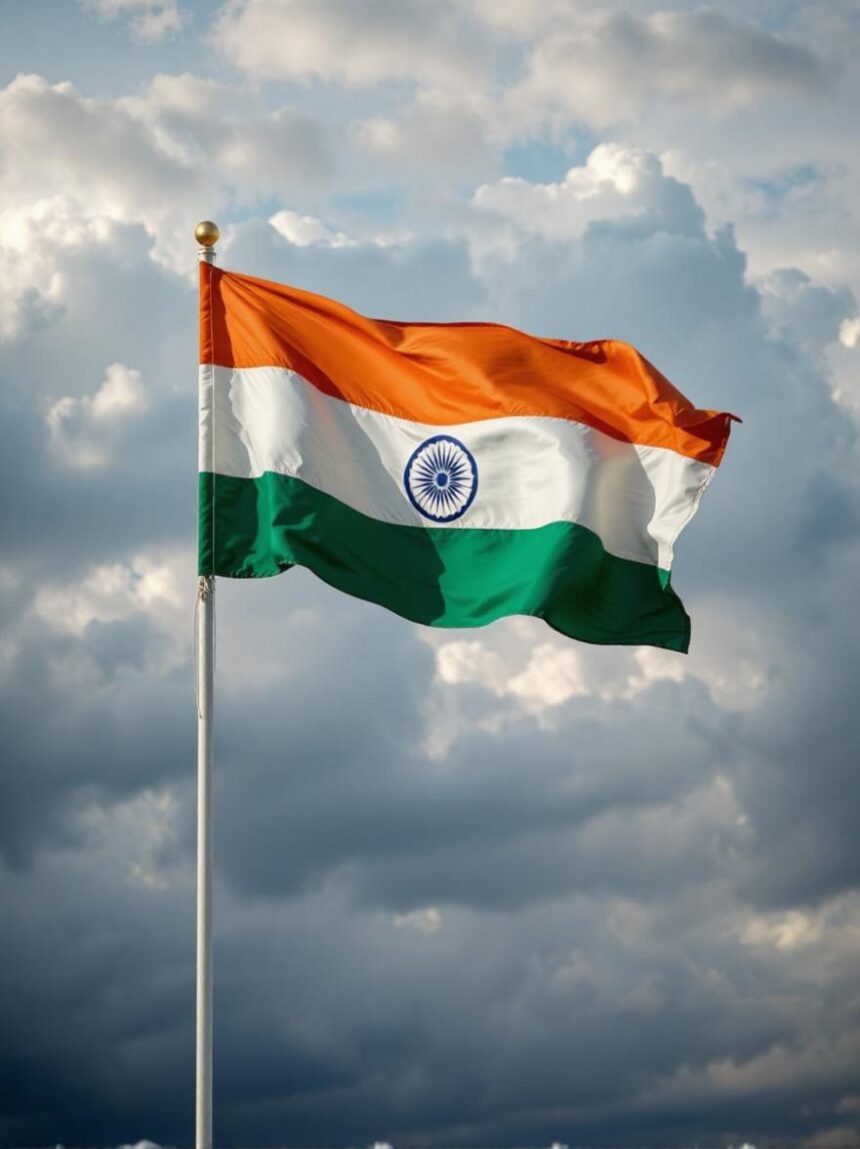7 Powerful Facts About the National Flag of India That Will Inspire You
The National Flag of India is one of the most important symbols of the nation, embodying freedom, unity, and pride. Known as the Tiranga, which means “tricolor,” the flag is a powerful representation of India’s struggle for independence and its aspirations as a modern, democratic nation. More than just a piece of cloth, the flag connects citizens emotionally to their history, culture, and collective identity. In this article, we explore the history, facts, timeline, significance, FAQs, and impact on daily life and society of the National Flag of India.
History of the National Flag of India
The history of the Indian National Flag is deeply intertwined with the country’s freedom struggle. Several versions of the flag were proposed and used by freedom fighters before independence.
1906: The first Indian flag, featuring three horizontal stripes of red, yellow, and green, was hoisted in Calcutta (now Kolkata).
1921: Pingali Venkayya designed a flag with Mahatma Gandhi’s guidance, incorporating red and green colors and a charkha (spinning wheel).
1931: A tricolor flag was officially adopted by the Indian National Congress, with saffron, white, and green stripes and a charkha in the center.
1947: On 15 August 1947, the current design was adopted as the National Flag of India, replacing the charkha with the Ashoka Chakra, a 24-spoke wheel in navy blue.
The flag’s colors and symbols were chosen carefully to represent India’s philosophy, unity, and aspirations.
Design and Symbolism
The Indian National Flag is a horizontal tricolor of saffron, white, and green with a navy blue Ashoka Chakra in the center:
Saffron: Represents courage, sacrifice, and the spirit of renunciation.
White: Denotes peace, truth, and purity.
Green: Symbolizes faith, fertility, and prosperity.
Ashoka Chakra: The 24-spoke wheel signifies law, dharma, and movement, inspired by the Ashoka Pillar at Sarnath.
The flag’s design reflects India’s history, culture, and moral values, making it a source of pride for every citizen.
Interesting Facts About the National Flag
Official Dimensions: The flag follows a 2:3 ratio, as per the Flag Code of India.
Unique Production: Only authorized manufacturers in India, mainly in Kolkata, are allowed to produce the flag for official use.
Respect and Etiquette: There are strict guidelines for displaying and handling the flag, including not letting it touch the ground.
National and International Presence: The flag is hoisted at government buildings, schools, and international events to represent India.
Flag Code of India: Enacted in 2002, it lays down rules for hoisting, folding, and displaying the flag, ensuring uniform respect.
Celebrated on Important Days: The flag is prominently hoisted on Independence Day (15 August) and Republic Day (26 January).
Symbol of Freedom: During the freedom struggle, the flag was a source of motivation and a symbol of resistance against colonial rule.
Timeline of Key Events
1906: First unofficial Indian flag hoisted in Calcutta.
1921: Pingali Venkayya designs a new flag for India.
1931: Tricolor flag adopted by Indian National Congress.
15 August 1947: Current design adopted as the official National Flag.
1950: Ashoka Chakra standardized in navy blue.
2002: Flag Code of India enacted to ensure proper usage and respect.
2020s: Digital awareness campaigns promote respect and knowledge about the flag.
Significance of the National Flag
The National Flag of India carries profound emotional, cultural, and political significance:
Symbol of Freedom: Represents India’s hard-won independence from British colonial rule.
Unity in Diversity: The flag unites citizens of diverse religions, languages, and regions under a common identity.
Moral Values: Inspires courage, truthfulness, and sacrifice in personal and national life.
National Pride: Hoisting the flag instills patriotism and pride in every citizen.
Global Recognition: Represents India at international events, diplomacy, and sports, reinforcing the country’s presence on the world stage.
FAQs About the National Flag of India
Q1: Who designed the Indian National Flag?
A1: Pingali Venkayya designed the flag under Mahatma Gandhi’s guidance, with the final version adopted in 1947.
Q2: What do the colors of the flag signify?
A2: Saffron signifies courage, white signifies peace, and green signifies prosperity. The Ashoka Chakra represents dharma and progress.
Q3: Are there rules for hoisting the flag?
A3: Yes, the Flag Code of India specifies proper etiquette, including hoisting the flag only from sunrise to sunset and not letting it touch the ground.
Q4: When is the National Flag officially hoisted?
A4: It is hoisted on Independence Day (15 August), Republic Day (26 January), and other national or government events.
Q5: Can anyone manufacture the National Flag?
A5: No, only authorized manufacturers in India are allowed to produce it for official use.
Impact on Daily Life
The National Flag affects daily life in many ways:
Education: Children learn about the flag in schools, instilling patriotism and respect for national symbols.
Government and Ceremonies: Displayed at official events, the flag reinforces national unity and pride.
Cultural Influence: Inspires art, literature, music, and patriotic activities across the country.
Tourism and Diplomacy: Hoisted at embassies, international events, and sports, enhancing India’s global image.
Social Responsibility: Promotes civic awareness, discipline, and respect for the nation.
Observance and Wishing
The flag is hoisted with respect and ceremony on major national days:
Independence Day (15 August): Prime Minister hoists the flag at Red Fort, Delhi.
Republic Day (26 January): Flag hoisted during parades and government ceremonies.
Schools and Institutions: Flag hoisting events celebrate national pride and patriotism.
Wishing: Citizens express respect by greeting with patriotic songs or participating in flag hoisting ceremonies.
Conclusion: Why the National Flag Matters
The National Flag of India is much more than a symbol of the nation; it embodies freedom, unity, and shared values. Every citizen, from students to leaders, connects emotionally with the flag, which serves as a constant reminder of India’s journey from colonial rule to a modern democratic nation.
Respecting and displaying the flag promotes patriotism, cultural pride, and social responsibility, ensuring that future generations remain connected to India’s history and values. The flag’s presence in schools, offices, public spaces, and international forums strengthens the sense of identity, unity, and national pride across the country.
By honoring the National Flag, Indians not only celebrate freedom and unity but also embrace the responsibilities that come with being part of a diverse and democratic nation.
Quick Recap: 7 Powerful Facts About the National Flag of India
Officially adopted on 15 August 1947.
Designed by Pingali Venkayya under Gandhi’s guidance.
Tricolor of saffron, white, and green with Ashoka Chakra.
Symbolizes courage, peace, prosperity, and dharma.
Hoisted on Independence Day, Republic Day, and other events.
Production regulated under authorized manufacturers.
Flag Code of India ensures respect and proper usage.








